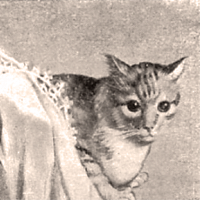The latest book from Giuseppa Federici revisits three techniques: Ars Aesis, Catherine de'Medici Embroidery and Buratto drawn-thread work.
This volume is 64 pages beginning with a little bit of history on Catherine de'Medici Embroidery, then some background on Buratto drawn-thread work and some instructions on how to do it and the things you'll need in general followed by a small ornament project which is used to explain how to execute the withdrawn area and fill it with a motif done in the linen stitch. There are a good 7 pages of step-by-step photos so if you don't speak Italian, you'll still get it. Ornament embellishment and assembly finish this section.
There are then seven projects combining Catherine de'Medici and Buratto drawn-thread work - some lovely border treatments here as well. After that are several pages of charted patterns for both techniques to be used with your own imagination to create other lovely things with the project of a small clasped purse to get you going.
Commercial Buratto fabric is loosely woven evenweave linen with about 16-18 threads per inch so withdrawing threads to create a netted ground lends itself beautifully to larger design areas which are completed relatively quickly. It goes fabulously with Catherine de'Medici Embroidery creating delights of light and dark areas of design.
The final section is on Ars Aesis and here you'll find several pattern designs, projects, borders and edgings though you'll need her first book for detailed instructions on how to execute some of the needle lace edgings. Just so I've said it, the text is all in Italian.
Now, you know how I love textured embroidery! I just had to get out my needle and thread to try one of the borders which I had previously admired in the first book:
Ars Aesis uses no. 10 crochet cotton for thread which provides a different finish from pearl cotton. In Europe, both DMC and Anchor market quite a few colours in this type of thread (DMC Babylo no. 10 and Anchor Freccia no. 12) however I'm having some difficulty sourcing much on this side of the pond.
If you know anywhere in North America which sells DMC Babylo no. 10 or Anchor Freccia no. 12 in anything other than white and ecru, would you leave a comment below?
In Europe you can purchase this book by bank transfer directly from the author herself.
Tombolo Disegni has it for those of us not in Europe, it can be found in the section of books with Catherine de'Medici Embroidery.


















